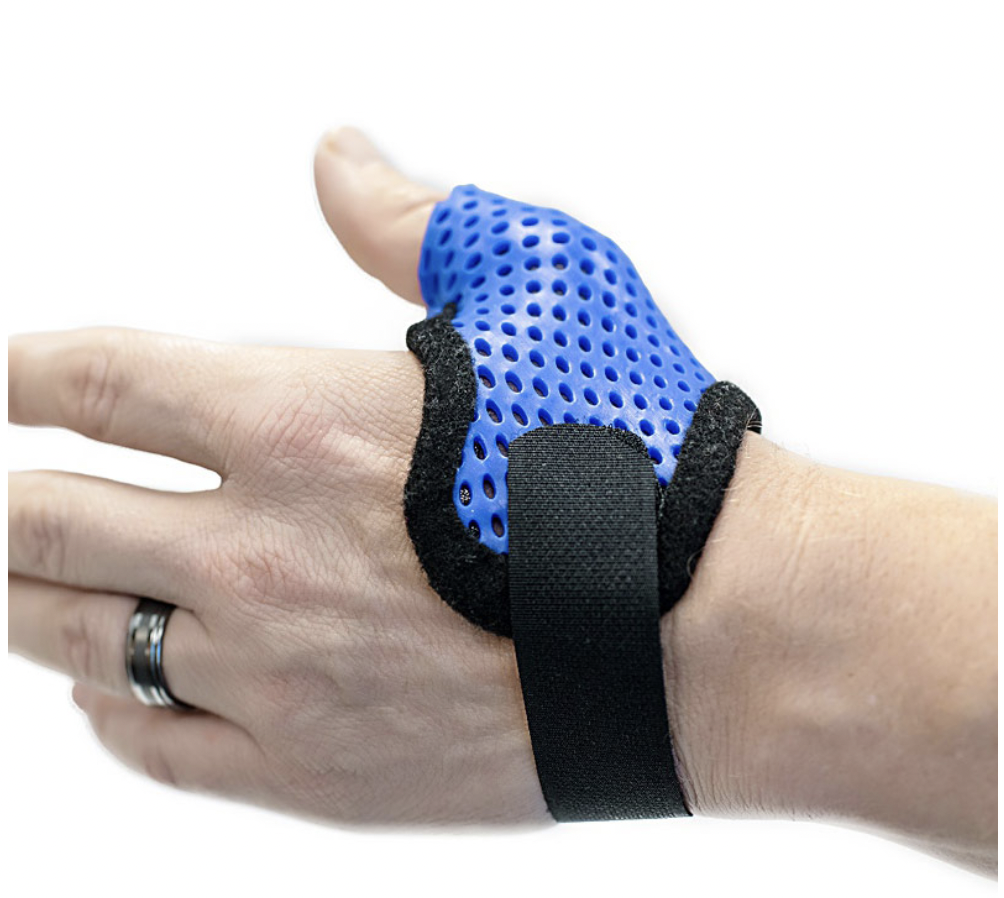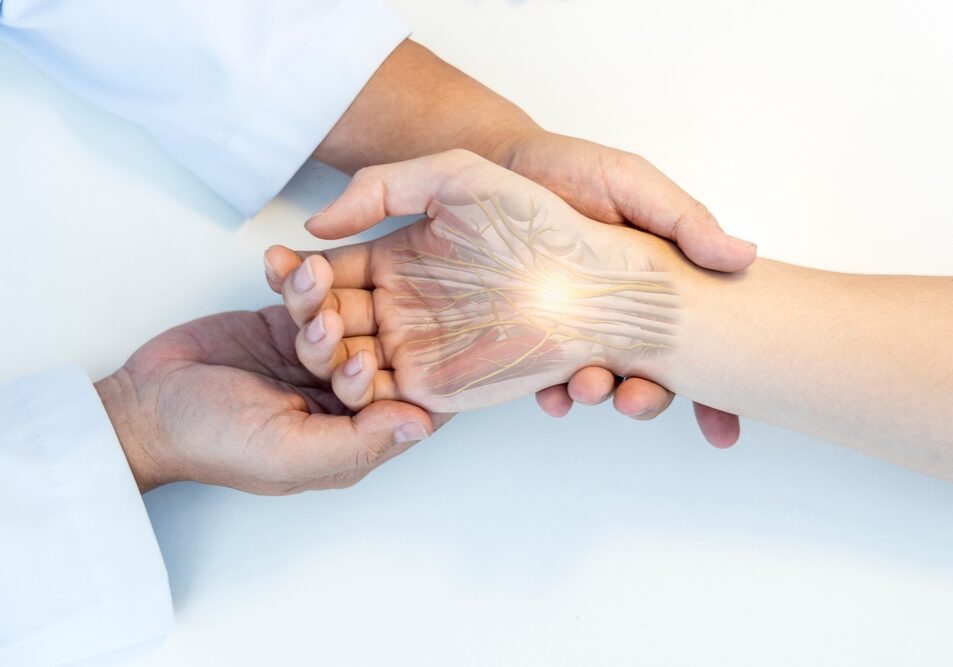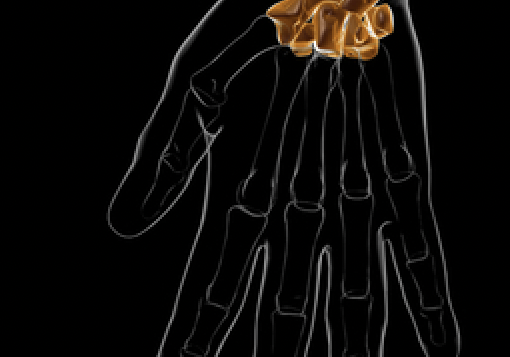Effectiveness of Conservative Therapy and Splinting for 1st CMC OA
Filed under Reviews, Treatments
Tsehaie, J., Sprekraijse, K., Wouters, R., Slijper, H., Feitz, R., Hovious, S., & Selles, R. (2018). Outcome of a Hand Orthosis and Hand Therapy for Carpometacarpal Osteoarthritis in Daily Practice: A Prospective Cohort Study. American Society for Surgery of the Hand, 1-11.

The skinny: Non-surgical approaches (hand therapy & orthotics) are typically the go-to for CMC osteoarthritis. However, there isn’t much solid evidence regarding the efficiency of this approach. And some individuals end up getting surgery despite receiving non-surgical approaches. The primary objective of this prospective cohort study was to determine how just effective hand therapy and immobilization orthotics actually are for CMC osteoarthritis (CMC therapy).
With a large sample size, a 12-month intervention, and an extended follow-up period, this article investigated whether non-surgical interventions should occur before those that are surgical. Orthotic use and regular hand therapy were proven to reduce pain and increase function in this CMC study.
In the Weeds: In this study, Tsehaie, et al. (2018) describe the results of 809 individuals with CMC arthritis who engaged in hand therapy and orthotic use across 11 locations in the Netherlands. Researchers used this study to describe the efficiency of non-surgical hand therapy and orthotics and the conversion rate from non-surgical to surgical approaches in this population.
Participants who met inclusion criteria were evaluated at an outpatient hand therapy clinic and diagnosed with CMC OA between the years of 2011-2014. Only 122 of the 809 participants completed all follow-up measures. However, surgical data were available for all 809-individuals.
Phase 1 of this study (week 0-6) included instructions for CMC orthosis to be worn 24-hours per day with hand therapy sessions that emphasized thumb positioning and range of motion.
Phase 2 of this study (week 7-12) began to phase out orthotic use as appropriate based on reports of pain and CMC stability. During phase 2, hand therapy sessions also began to be phased out, with more of an emphasis placed on home exercise programs.
Outcome measures for this study were recorded at baseline, 6-weeks, 3-months, and 12-months. These measures included the visual analog scale for pain and the Michigan Hand Questionnaire for a self-report of function. On top of these outcomes, each participant had a follow-up appointment with their hand surgeon after 3-months to determine whether surgery for their CMC OA was recommended.
124 out of the 809 individuals in this study were identified to have had surgery for their CMC OA.
Pain: Pain was observed to significantly decrease after the 12-month non surgical intervention for CMC OA. It should be noted that most of that progress however, occurred during the first 6-weeks.
For individuals who had severe pain going into the study, significant pain reduction was reported. However, for those who didn’t have much pain going in, there was actually an increase in pain. This may have been due to increased awareness due to the intervention.
Function: Function improved significantly after 6-weeks for individuals in this study. Unfortunately however, that significance was not maintained when it was measured again at 12-weeks.
Bringing it Home:
After an average follow-up of 2.2 years, only 15% of individuals who had received non-surgical interventions for CMC osteoarthritis were converted to surgical treatment. Of those who did not have surgery, non-surgical interventions showed a significant reduction in pain and improvements in function.
In line with previous evidence, most of this pain reduction was observed to occur in the first six weeks of treatment; and then maintained after that. Keep in mind that during that first 6-weeks, orthoses were worn all day, every day.
Individuals who reported ‘more’ pain and ‘less’ function at the start of the study were slightly more likely to end up in the operating room. However, initially, the most significant pain reductions post-intervention were seen for those who did not receive surgery but did have high pain levels.
Rating: 4 out of 5
The strengths of this study included its large sample size as well as its natural setting. Unfortunately, the ‘natural’ setting has weaknesses, including non-compliance, increased drop-out rates, and inconsistencies between treatment sessions.
Despite the mentioned weaknesses, the researchers did a good job with this one. The study supports hand therapy as an initial treatment for CMC osteoarthritis. It should provide confidence to you hand therapists out there striving to provide the best possible care for your clients.
More To Read
Pillar Pain After Carpal Tunnel Release Surgery
Pillar Pain After Carpal Tunnel Release Surgery Carpal tunnel release (CTR) surgery is a common procedure, with the majority of patients experiencing satisfaction with its outcomes. However, for some individuals, a temporary complication known as “pillar pain” may arise, affecting approximately 13% of those undergoing CTR. Pillar pain manifests in the thenar eminence and hypothenar…
Read MoreCarpal Fractures: A Brief Overview
Carpal fractures account for 8% of fractures in the upper extremity. The carpals are situated between the (distal radius and ulna) and the metacarpals. They make up the proximal row- Scaphoid, Lunate, Triquetrum, and Pisiform, the distal row- Trapezium, Trapezoid, Capitate, and Hamate. Here are some of the most common carpal bone fracture Scaphoid…
Read MoreComparing IP and MCP joint splinting for Trigger Finger
Teo, S. H., Ng D. C., Wong, Y.K.(2018). Effectiveness of proximal interphalangeal joint blocking orthosis vs metacarpophalangeal joint blocking orthosis in trigger digit: A randomized clinical trial. Journal of Hand Therapy, 1-7. The Skinny- This study compared PIP joint immobilization via an Oval-8TM with a custom MCP blocking orthosis in the treatment of trigger finger. …
Read MoreSign-up to Get Updates Straight to Your Inbox!
Sign up with us and we will send you regular blog posts on everything hand therapy, notices every time we upload new videos and tutorials, along with handout, protocols, and other useful information.





